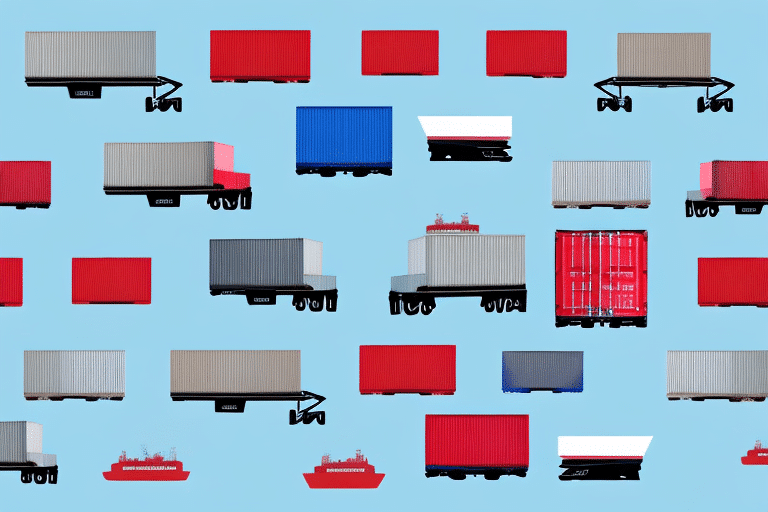Understanding 3PLs and Their Role in Ecommerce Scaling
Third-party logistics providers (3PLs) play a crucial role in scaling ecommerce operations by managing logistics functions such as warehousing, transportation, and inventory management. Partnering with a 3PL allows ecommerce businesses to concentrate on their core competencies, such as product development and marketing, while outsourcing complex logistical tasks.
As order volumes grow, 3PLs offer increased efficiencies, advanced technology, and a broader range of services. This enables ecommerce businesses to scale without the necessity of expanding internal infrastructure, thereby reducing overhead costs and enhancing operational flexibility.
Benefits of Partnering with a 3PL for Order Fulfillment
Cost Efficiency and Scalability
One of the primary advantages of working with a 3PL is the potential for reduced shipping costs through economies of scale. According to a study by Supply Chain Digital, the global 3PL market is expected to grow significantly, highlighting the cost efficiencies that 3PLs provide.
Enhanced Shipping Speed and Reliability
3PLs utilize optimized processes and advanced technology to improve shipping speed and reliability. This leads to higher customer satisfaction and repeat business. Implementing efficient order fulfillment systems can reduce order processing times by up to 30%.
Flexibility in Handling Demand Fluctuations
During peak seasons or promotional periods, 3PLs offer the flexibility to handle increased order volumes without the need for permanent scaling of internal resources. This adaptability ensures that businesses can maintain service levels even during high-demand periods.
Access to Advanced Technology
3PLs invest in state-of-the-art logistics technology, including warehouse management systems (WMS) and transportation management systems (TMS). These technologies provide real-time inventory tracking, order management, and data analytics, which are essential for informed decision-making.
Selecting the Right 3PL Partner for Your Ecommerce Business
Assessing Proximity and Network Coverage
Choose a 3PL partner with a strategic location relative to your customer base to ensure faster shipping times and reduced transportation costs. A well-distributed network allows for efficient fulfillment and last-mile delivery.
Evaluating Specialization and Industry Expertise
Select a 3PL that specializes in your product category to leverage their industry-specific knowledge and expertise. This ensures that your products are handled correctly and that compliance with relevant regulations is maintained.
Technology Integration and Compatibility
Ensure that the 3PL’s technology platforms seamlessly integrate with your ecommerce platform and order management systems. This integration facilitates smooth data flow, reduces errors, and enhances overall operational efficiency.
Scalability and Flexibility
Your 3PL partner should be able to scale their services in line with your business growth. Assess their capacity to handle increased volumes and their ability to adapt to changing business needs.
Transparent Pricing and Proven Track Record
Evaluate the 3PL’s pricing structure to ensure it aligns with your budget and provides transparency. Additionally, review their performance history and client testimonials to gauge their reliability and service quality.
Negotiating Carrier Contracts During Growth Phases
Understanding Pricing Structures and Surcharges
Analyze the various shipping rates and surcharges offered by carriers to enhance your negotiation stance. Common surcharges include fuel surcharges, residential delivery fees, and oversize package fees. Understanding these can help in negotiating more favorable terms.
Leveraging Volume-Based Discounts
As your shipping volume increases, negotiate for volume-based discounts. Carriers are often willing to offer reduced rates in exchange for higher shipping volumes, which can lead to significant cost savings.
Benchmarking Against Industry Standards
Compare your carrier’s rates with industry benchmarks to ensure competitiveness. Utilizing data from sources like the Analytics Insight can provide valuable insights into fair pricing.
Ensuring Comprehensive Service Level Agreements (SLAs)
Include clear SLAs in your contracts to define expected service standards, such as delivery times and error rates. This ensures accountability and provides a basis for addressing performance issues.
Incorporating Flexibility and Exit Clauses
Ensure your contracts include provisions for flexibility and termination to safeguard your business against unforeseen circumstances or underperformance by the carrier.
Optimizing Shipping Strategies for Cost Reduction and Enhanced Customer Experience
Utilizing Regional Carriers
Regional carriers can offer cost advantages and faster delivery times within specific areas. Diversifying your carrier base can lead to optimized shipping costs and improved delivery performance.
Implementing Free Shipping Thresholds
Encouraging customers to reach a minimum order value to qualify for free shipping can boost average order size and enhance customer satisfaction. According to Business News Daily, free shipping is a significant factor influencing purchase decisions for 95% of shoppers.
Enhancing Order Tracking Capabilities
Providing real-time order tracking improves customer transparency and reduces the volume of inquiry calls to customer service. Integrating tracking systems can enhance the overall customer experience.
Implementing Automated Shipping Rules
Automate shipping decisions based on criteria such as weight, size, and destination to streamline operations and reduce manual errors. Automation tools can enhance efficiency and accuracy in order fulfillment.
Adopting Sustainable Packaging Solutions
Using eco-friendly packaging not only aligns with environmental sustainability goals but can also reduce shipping costs. Sustainable packaging options, such as biodegradable or recycled materials, can lower material costs and improve brand perception.
Managing Performance Metrics and Mitigating Risks with Your 3PL
Tracking Key Performance Indicators (KPIs)
Monitor essential KPIs such as on-time delivery rates, order accuracy, and shipping costs to evaluate your 3PL’s performance. Regularly reviewing these metrics helps identify areas for improvement and ensures alignment with business objectives.
Implementing Regular Performance Reviews
Conduct periodic performance reviews with your 3PL partner to discuss metric outcomes, address issues, and set improvement goals. Transparent communication fosters a collaborative relationship focused on continuous enhancement.
Mitigating Contractual Risks
Ensure that carrier contracts include clear terms regarding liability, service levels, and dispute resolution. Including clauses such as force majeure and termination provisions protects your business from potential disruptions and legal disputes.
Establishing Contingency Plans
Develop contingency plans to address unexpected events such as natural disasters, supplier disruptions, or sudden demand spikes. Effective contingency planning ensures business continuity and minimizes the impact on operations.
Ensuring Compliance and Safety Standards
Verify that your 3PL partner adheres to industry regulations and safety standards, especially if handling hazardous materials. Compliance ensures the safe and legal handling of products, mitigating risks associated with non-compliance.
Conclusion
Partnering with a 3PL is instrumental in scaling ecommerce operations, providing cost efficiencies, enhanced shipping capabilities, and the flexibility needed to navigate market fluctuations. By selecting the right 3PL partner, negotiating favorable carrier contracts, and optimizing shipping strategies, ecommerce businesses can achieve sustainable growth and deliver exceptional customer experiences.
Moreover, diligently tracking performance metrics and implementing risk mitigation strategies ensures that logistics operations remain robust and aligned with business goals. Embracing these practices allows ecommerce businesses to focus on their core strengths, driving innovation and long-term success in a competitive marketplace.






















